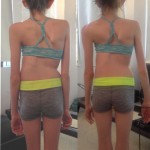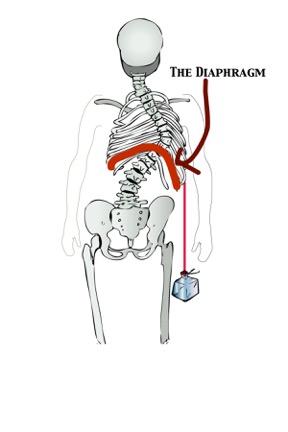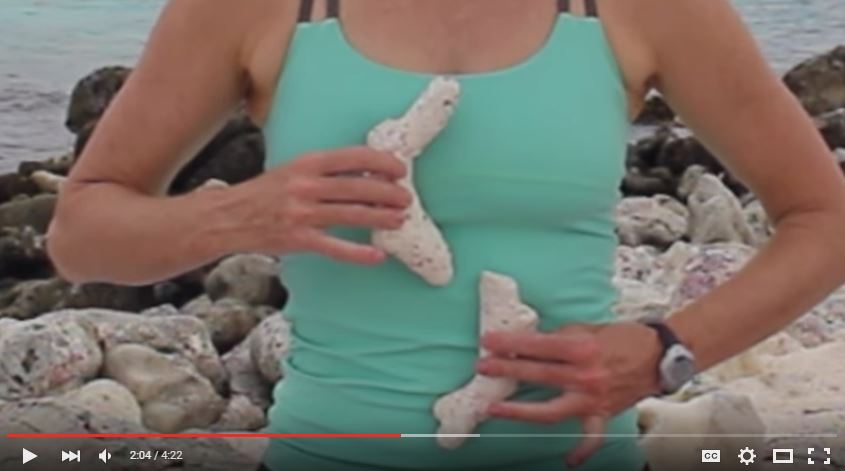It is logical, isn’t it? To side-bend for scoliosis? After all, if you see a curve in the upper back, or thoracic spine, that side-bends to the right, doesn’t it make perfect sense to reverse that by side-bending to the left? Yes, it makes perfect sense. And I’ve done it too, but here’s why it doesn’t always work:
Scoliosis is a spiral that is held in place by bony structure, ligaments, tendons, and a complex fascial network. The scoliosis spiral moves in three planes of motion:
1. Front to back: sagittal plane,
2. Rotation: transverse plane,
3. Side-to-side: coronal plane.
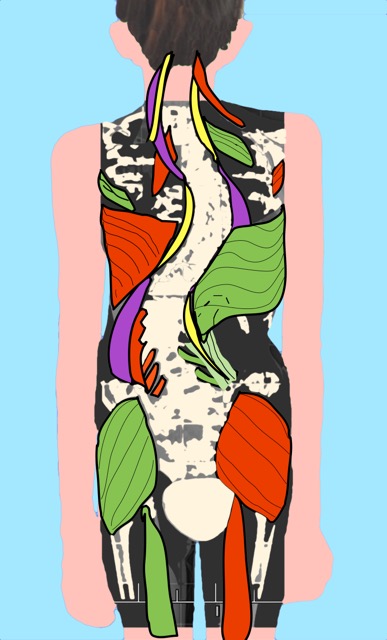
This last one, the side-to-side change is what an Xray shows. The picture shows the curves moving from left to right or, right to left. Unfortunately, it isn’t a complete picture. It is only one-third of the picture.
When surgeons corrects scoliosis, they address the side-to-side changes but also the rotations and the front-to-back changes. We can do the same with exercise. We do not need to limit ourselves to just the side-to-side, or coronal, plane.
Let’s address the thoracic spine. To effectively accomplish a correction we want to address everything from the feet to the top of the head; just like we always do in Pilates. But for now, we are talking thoracic only. With scoliosis, as in most spines, the most flexible points of the thoracic spine will be at the junctions above it and below it: the cervical-thoracic junction at the top and the thoracic-lumbar junction at the bottom. Just like in any spine, if we side-bend, the points that really want to move are those junctions. The danger with scoliosis, is that we will end up moving from those junctions and never actually moving the scoliosis at all. Here’s what we can do to change that.
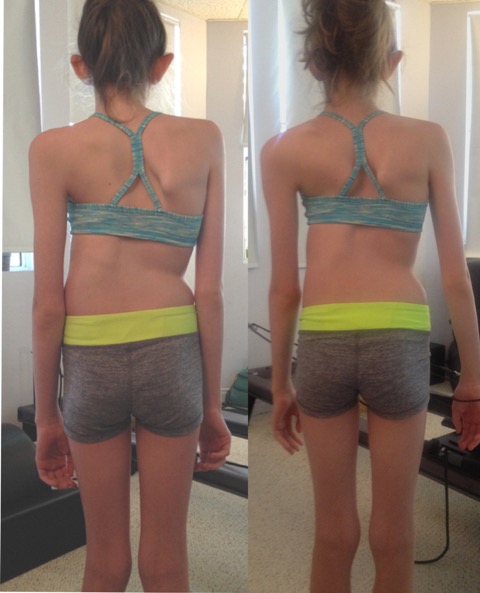
Begin with elongation. Elongate the spine. Whatever flexibility there is in the spine, will be moved towards neutral with elongation. This can be accomplished easily in a seated position with the hands placed behind the hips on the floor. As the arms straighten, the spine lengthens. Elongation provides correction in all three planes of movement.
Our second correction is in the sagittal plane. Do you see what might look like a small bump (convexity) in the ribcage area? We must first move this bump forward (anteriorly), or towards the chest.
Our third correction will be to glide the ribcage to the opposite side of the thoracic convexity (a coronal correction). The tendency is to begin to side-bend here. I tell clients to think of gliding with an upward motion towards the armpit. That tends to eliminate any side-bending.
Finally, we are going to take a deep inhale, expanding the ribs on the back that are on the side opposite of the convexity. As we exhale, the ribs on the front of body on the same side are drawn in, or moved posteriorly (our transverse correction).
Now hold it. Continue breathing. This is where the fascial changes that support the spine will happen. In addition, according to Dinah Bradley, co-author of Recognizing and Treating Breathing Disorders, lasting change will only begin with a change to the breathing pattern. If we continue to allow the diaphragm to only expand in its old pattern than there is no reason for change to occur. Every breath will only encourage the shape of the scoliosis. Once achieved, hold the changes and breathe. Every breath is a breath to confirm a new pattern, a new neutral a spine. Breathe Deeply. The diaphragm fully expands and contracts in three-dimensions. It is no longer being constricted and suffocated.
After all this, when your client can hold these corrections then movement can be introduced: an exercise that holds the correction and reaffirms it with every breath and move. It’s very exciting work. Yes, and side-bending can be introduced but while holding the corrections. I find it to be a very advanced exercise for my own scoliosis and for that of my clients as well.
To watch a scoliosis unwind and realign is incredible work. I remember when and where the journey began. It has been a humbling journey. Every day, it is humbling to stand before a new spine and watch the magic unfold. As Pilates Instructors, we’ve all been given a gift, we are catalysts for change. Please use your gift. And if you ever need any guidance, I’m here to help.
ASSOCIATED VIDEO:
Caption: Because sometimes it’s easier to watch a video about exercise than wade through all these words, here is a video by Karena about side-bending for scoliosis.

